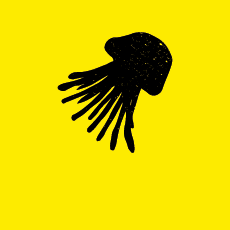




| Home | Features | Club Nights | Underwater Pics | Feedback | Non-Celebrity Diver | Events | 2 August 2025 |
| Blog | Archive | Medical FAQs | Competitions | Travel Offers | The Crew | Contact Us | MDC | LDC |

|

|
 
 |
 ISSUE 24 ARCHIVE - MYTH BUSTED: THE BEST CURE FOR A JELLYFISH STINGMyth: The best cure for a jellyfish sting is to wee on itHas anyone actually ever tried doing this? Quite apart from the fact that it is anatomically tricky to contort oneself sufficiently to project the amber nectar onto the affected area, I would imagine the sufferer would be in too much pain to muster a good stream. It was brought to my attention recently that at various times, our writers over the years have given utterly opposite opinions on the veracity of this old myth. So let's get the facts out of the way... Number 1: Jelly-"fish" are not fish. They are coelenterates, belonging to the phylum Cnidaria, which also includes corals and sea anemones. Number 2: starfish aren't fish either. But that's another story. Unlike fish, jellyfish don't have any recognisable organ systems, but unfortunately for us, they do have a very effective defence mechanism: nematocysts. These are specialised stinging cells, millions of which are present in tentacles. At the slightest touch they eject a barbed filament, which penetrates most defences and injects a venomous neurotoxin. This can cause a) nothing; b) severe pain; c) paralysis; d) death; or any combination of the above. Over years of field research, collating the experiences of many victims, it appears the best approach to a jellyfish sting is this: if there are tentacles still clinging to the skin, they should be doused liberally in vinegar, as its acidic pH helps to deactivate the alkaline nematocysts. Unless there is something severely amiss with your kidneys, the pH of urine is pretty similar to that of water, so it is next to useless in terms of stopping nematocysts from firing off. Urine is, however, quite warm; and it is probably only this property that helps to soothe the sensitive stung skin (so warm water would be just as good, and infinitely more palatable). Once deactivated, the tentacles should then be lifted off gently, with something other than a hand; for example, a stick, tweezer or blunt knife. Some advocate the use of a liberal coating of flour to aid the removal of particularly adherent tentacles (with the added bonus that they can then be quickly deep- fried for a tempura-battered tentacular snack whilst waiting for further first aid/an ambulance/one's Maker). In the past, all sorts of other substances have been used – baking soda, meat tenderiser, the tears of spurned mermaids – but most guidance these days suggests ice packs, local anaesthetic (in spray or ointment form) and/or steroid creams for the searing pain that the sting can induce. So there you have it – no further need to wee on your dive buddy as an act of mercy. In fact, some authorities claim it can actually encourage the discharge of more nematocysts. Such sadism has no place in real life, but bear it in mind when you next take on the role of a Bond villain at a particular sort of Christmas party. Previous article « Diving after Subarachnoid Haemorrhage Next article » Sharkipedia Back to Issue 24 Index |